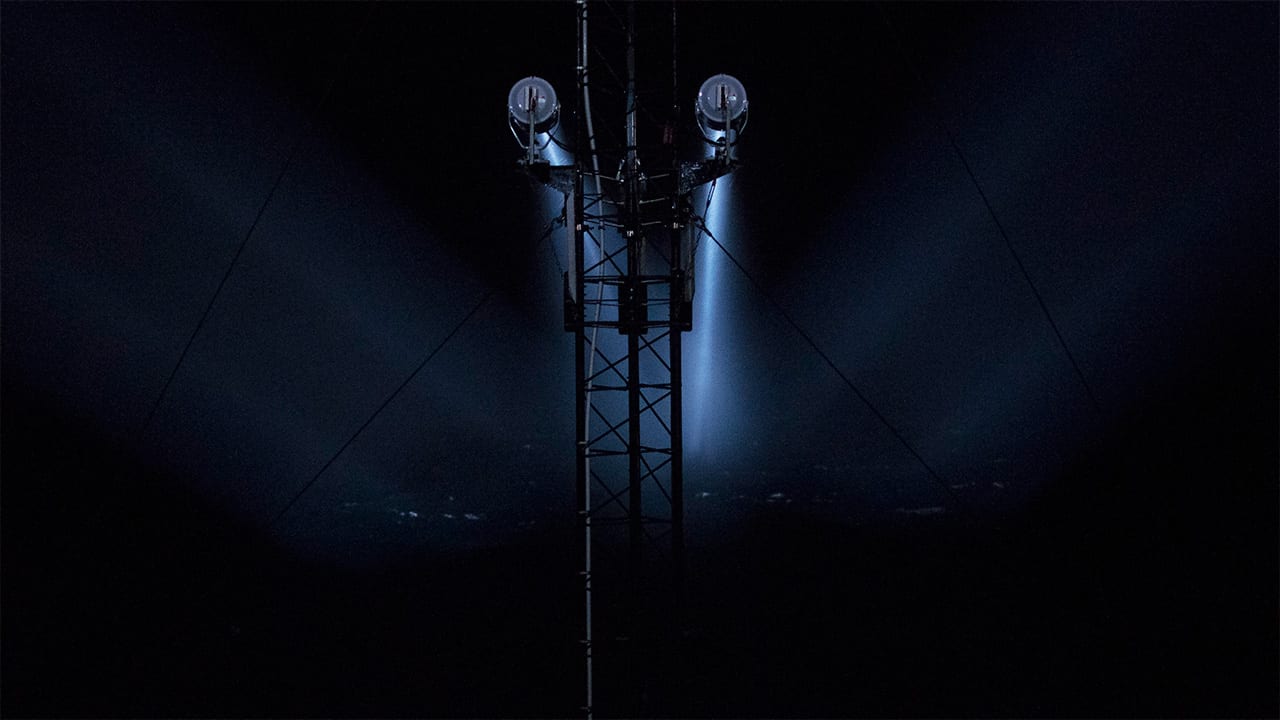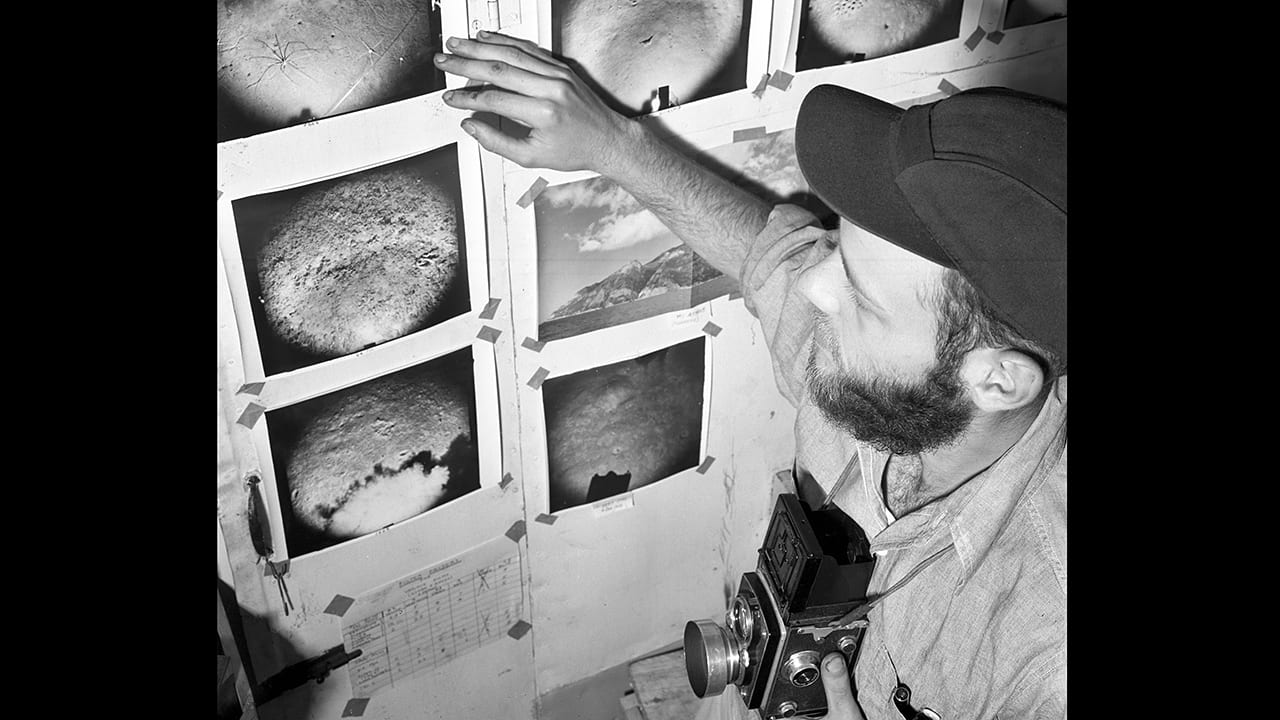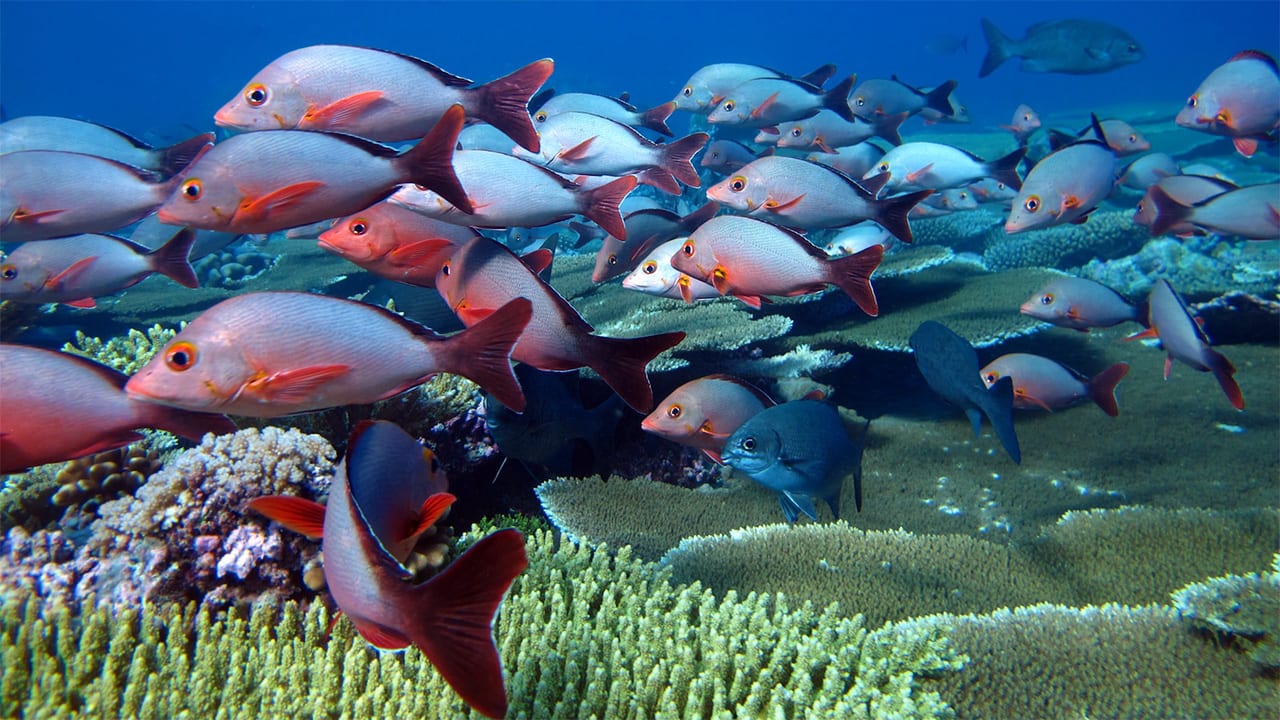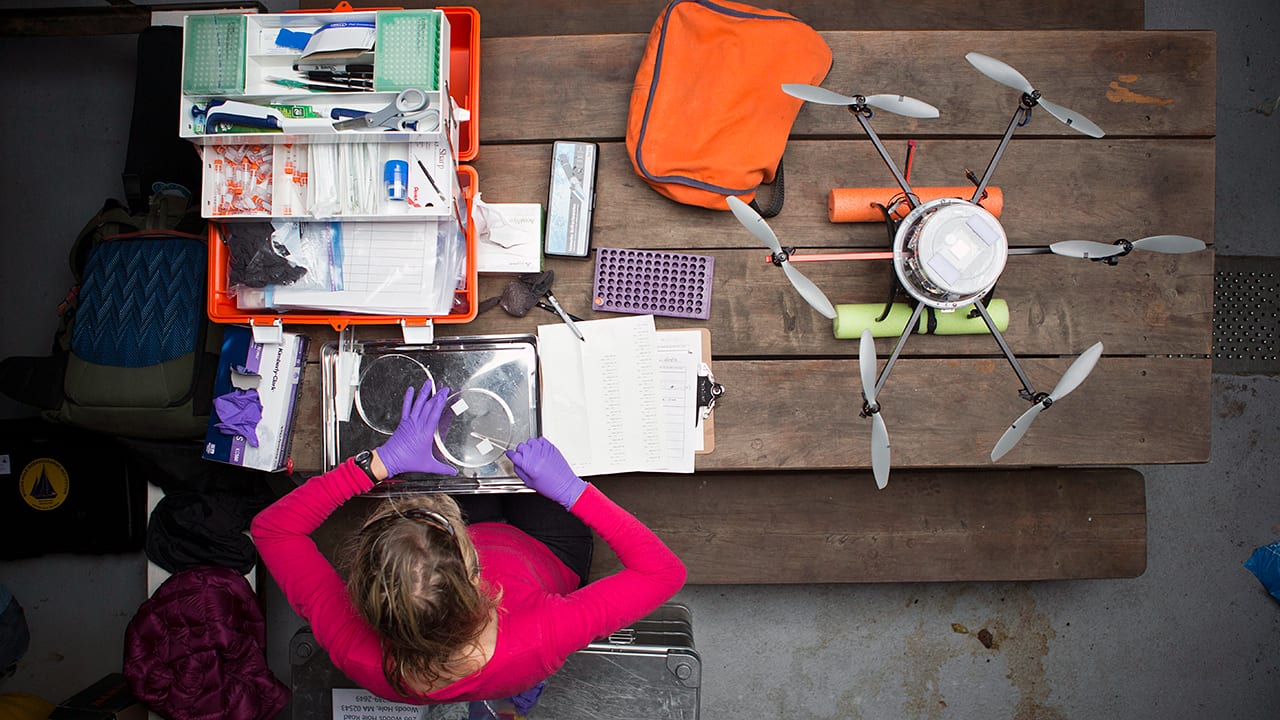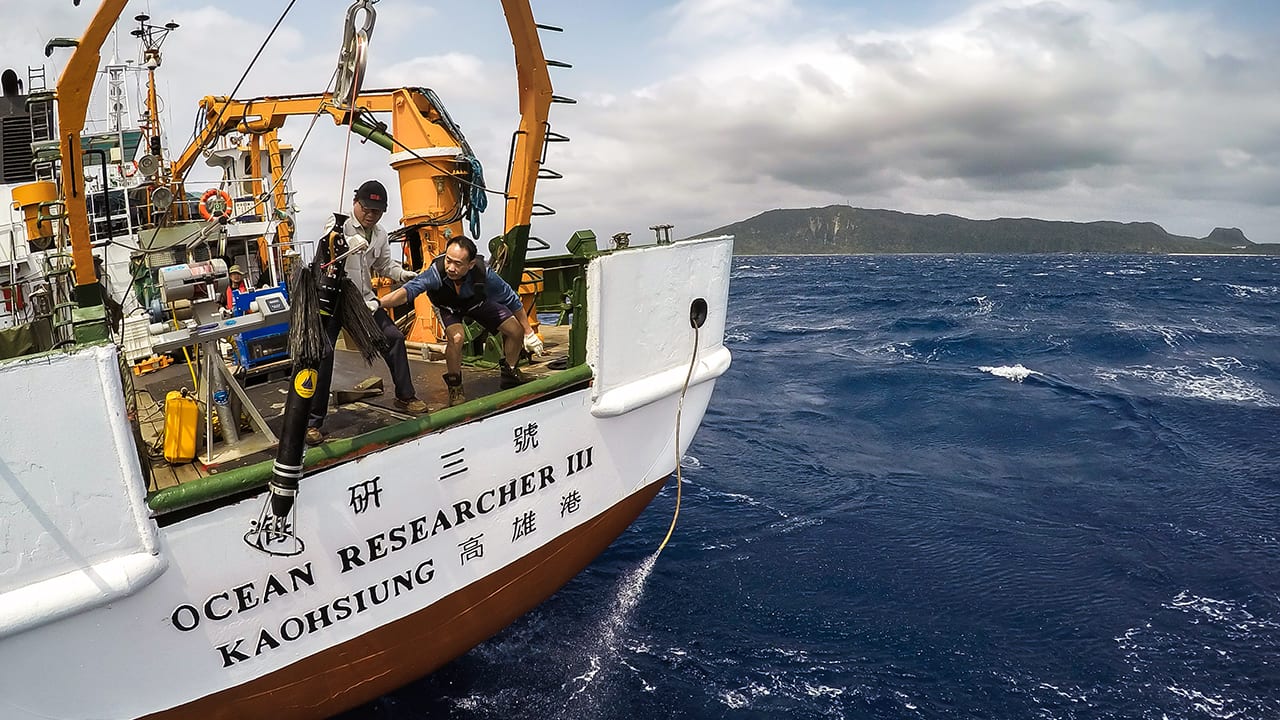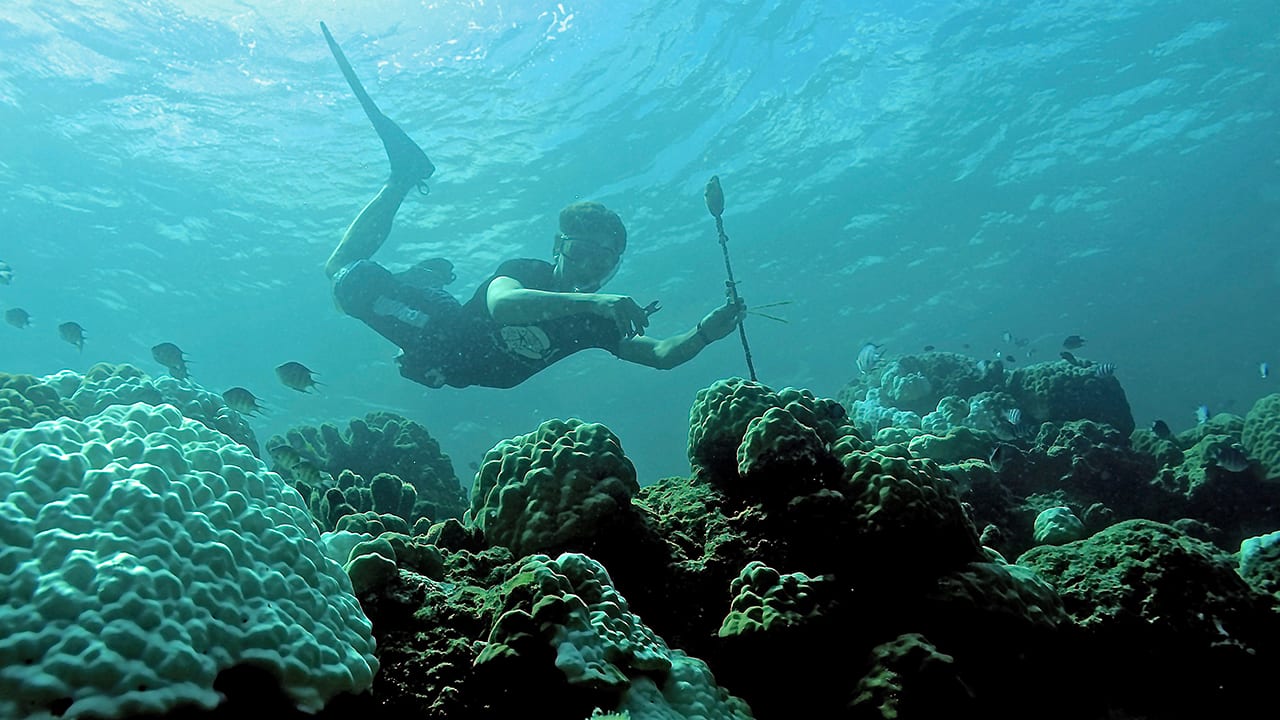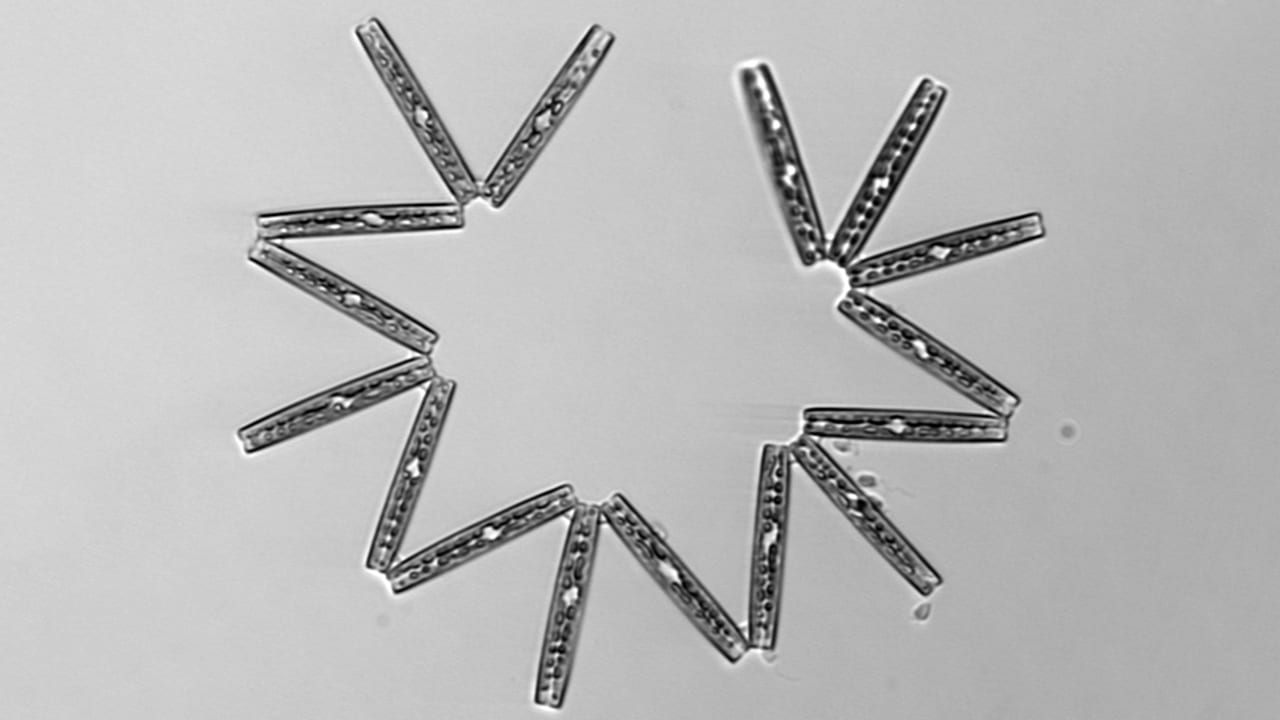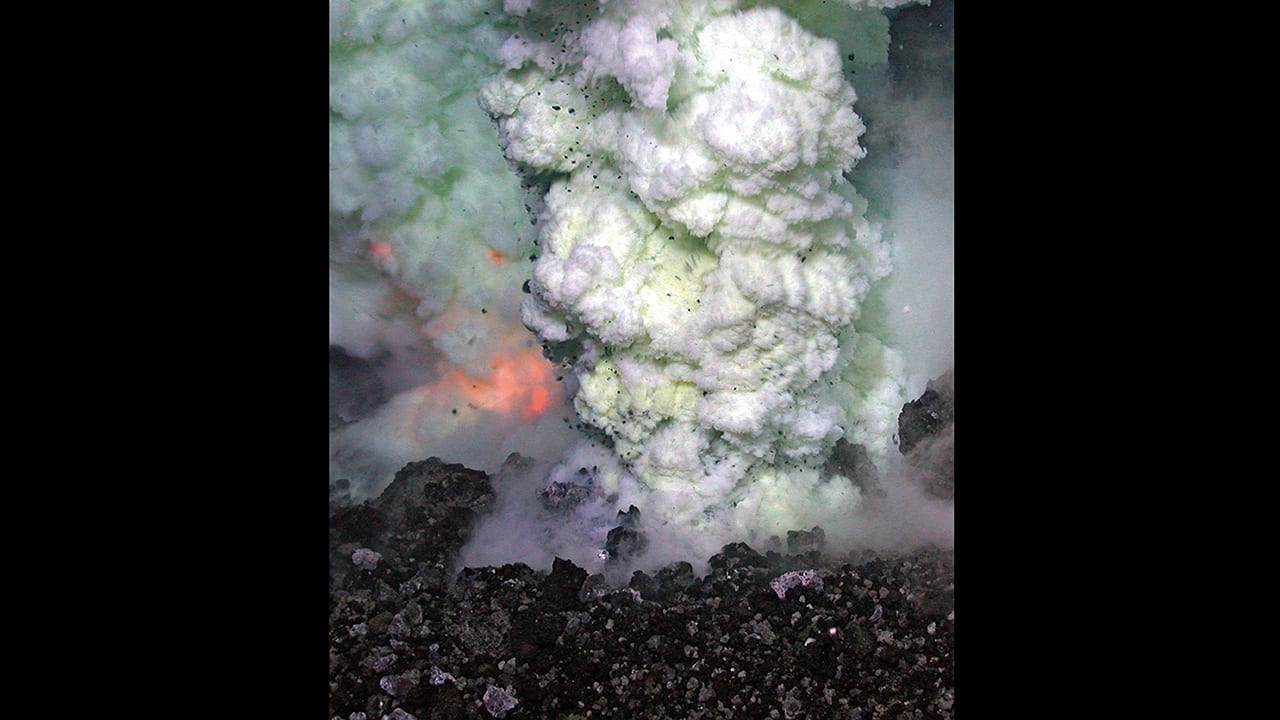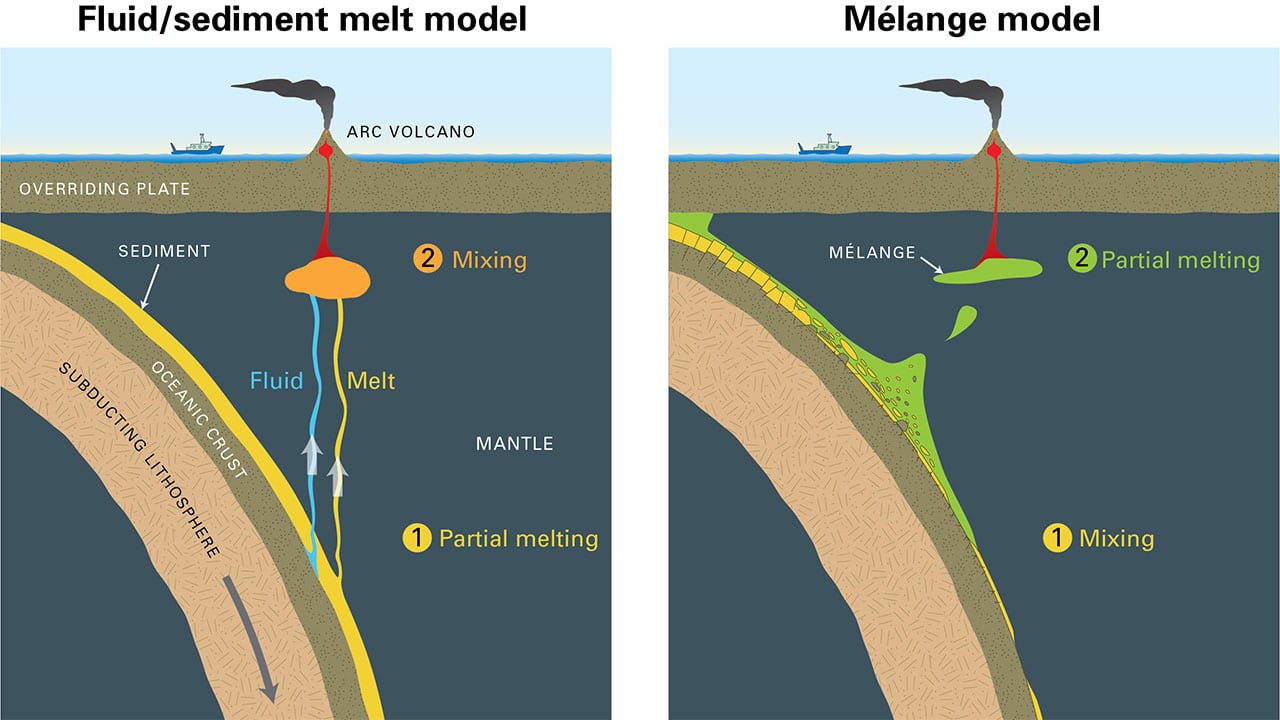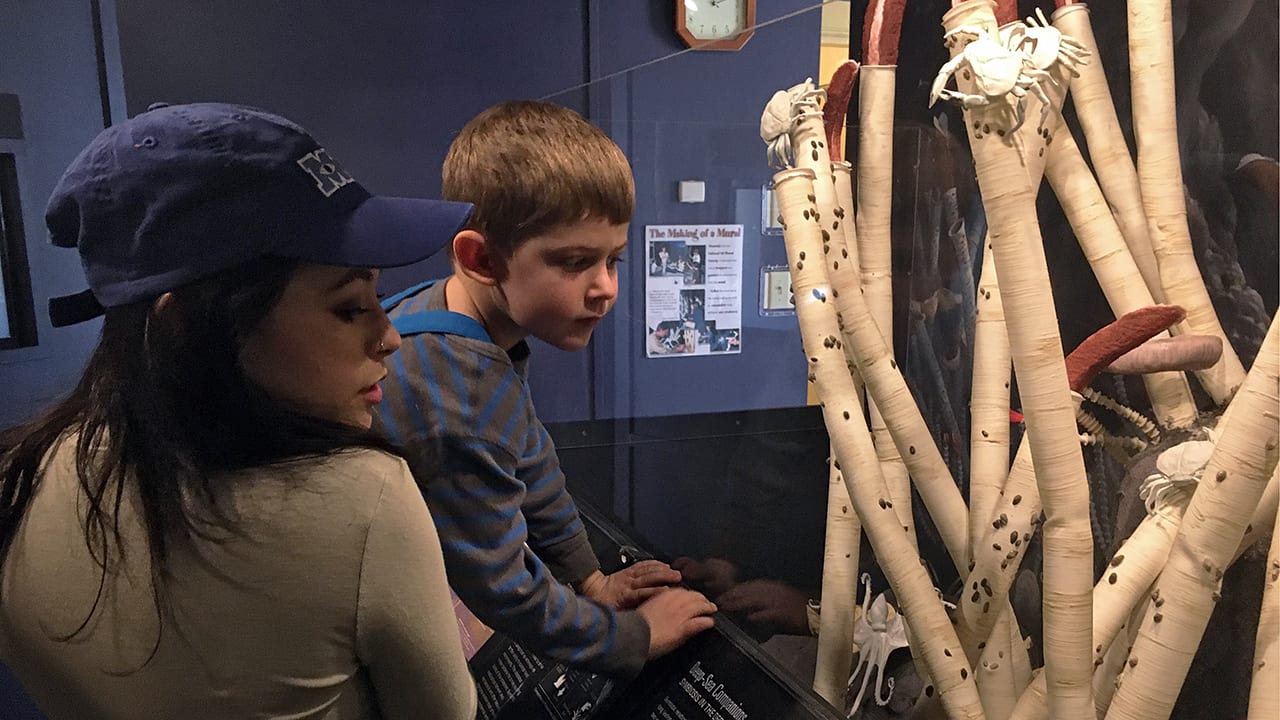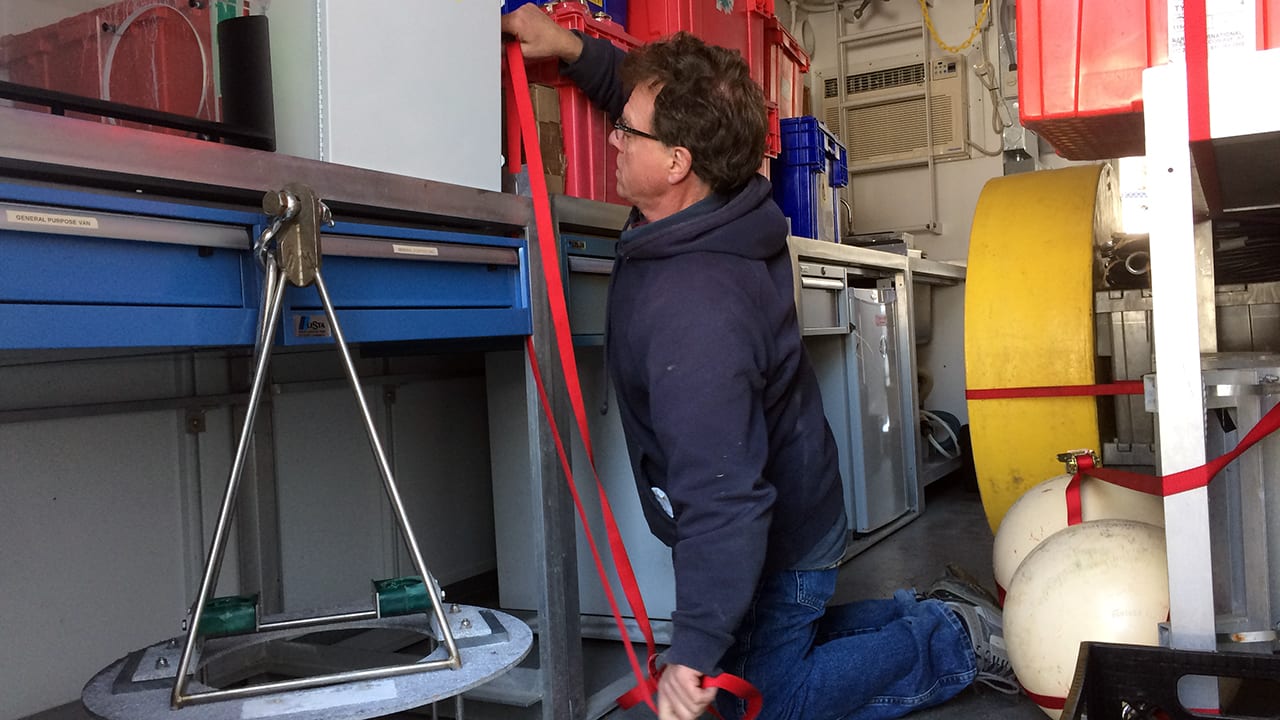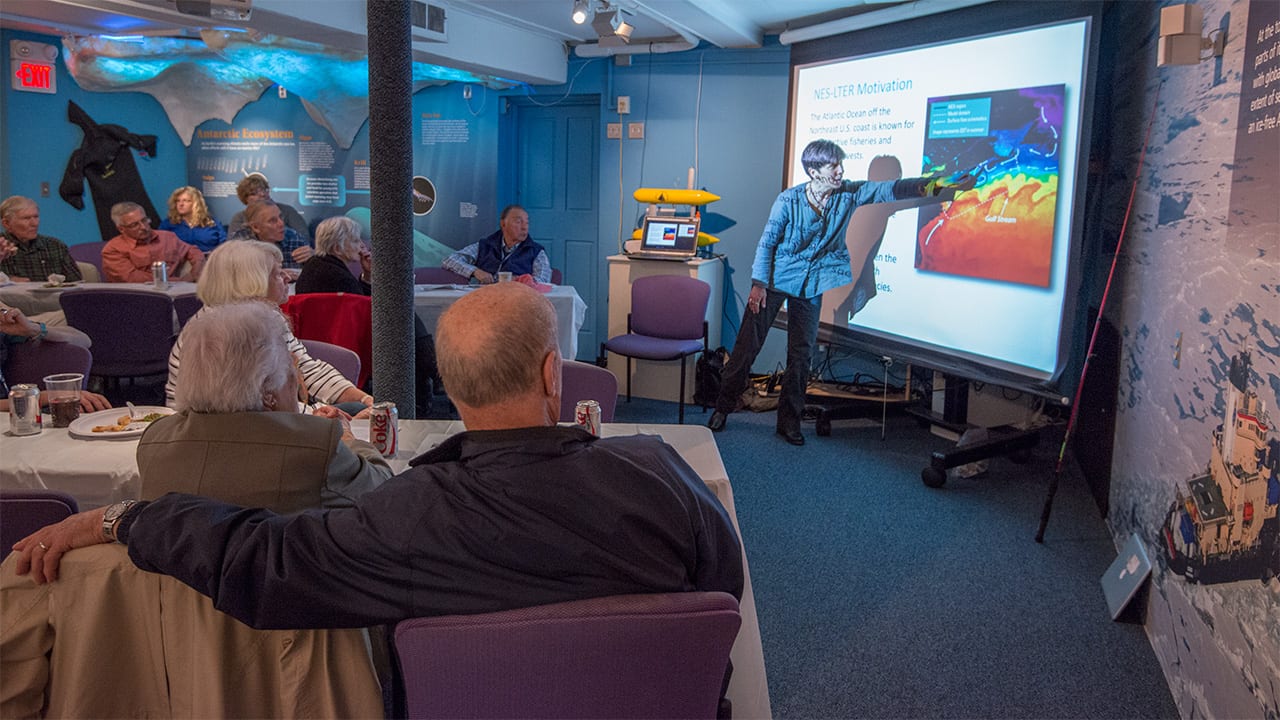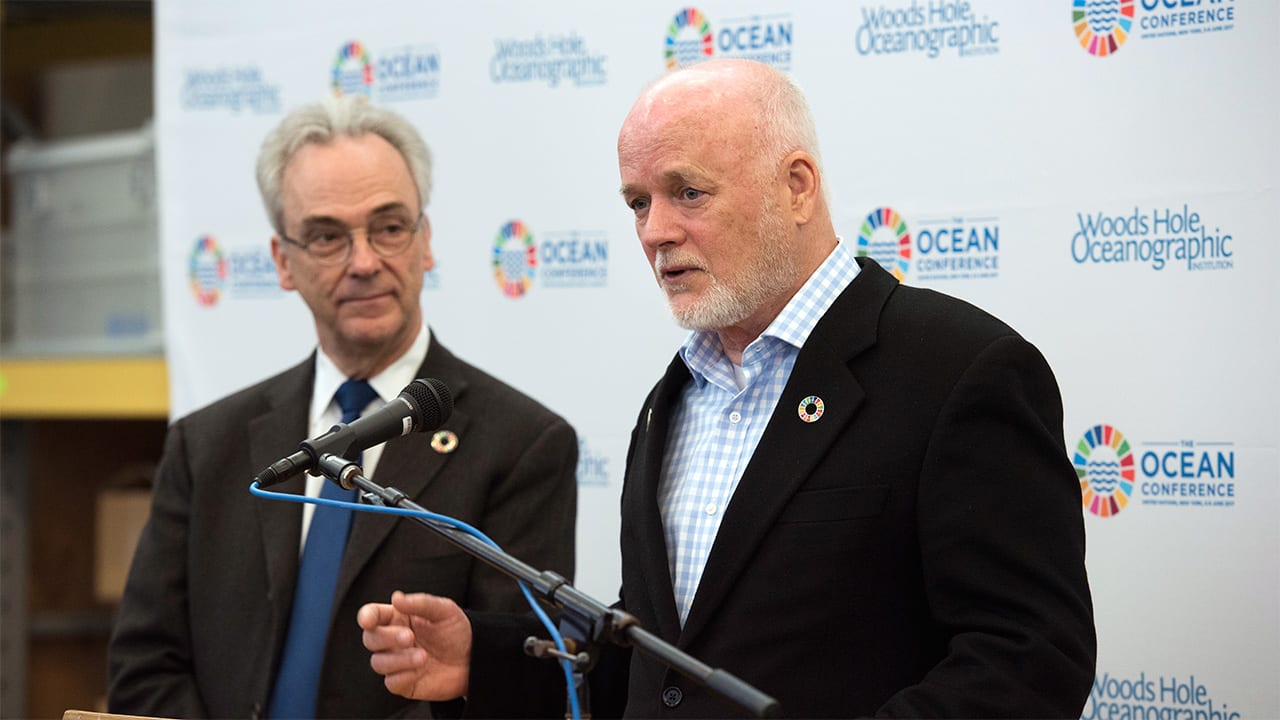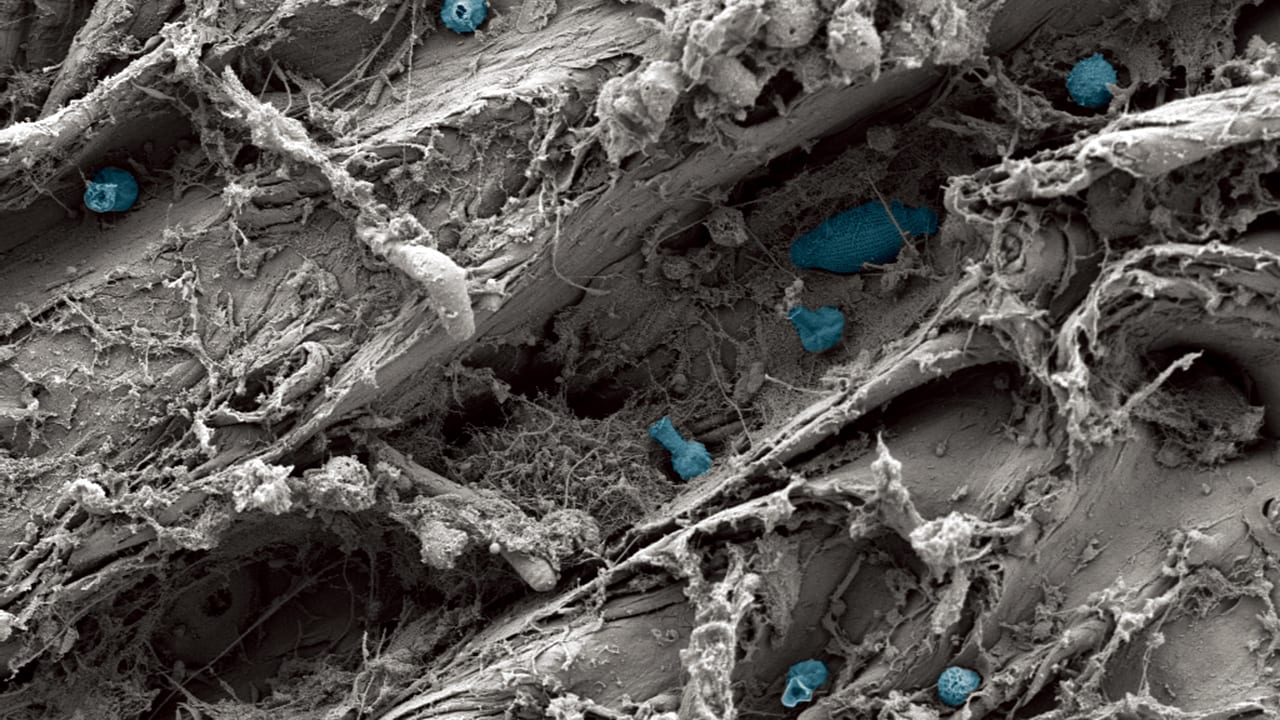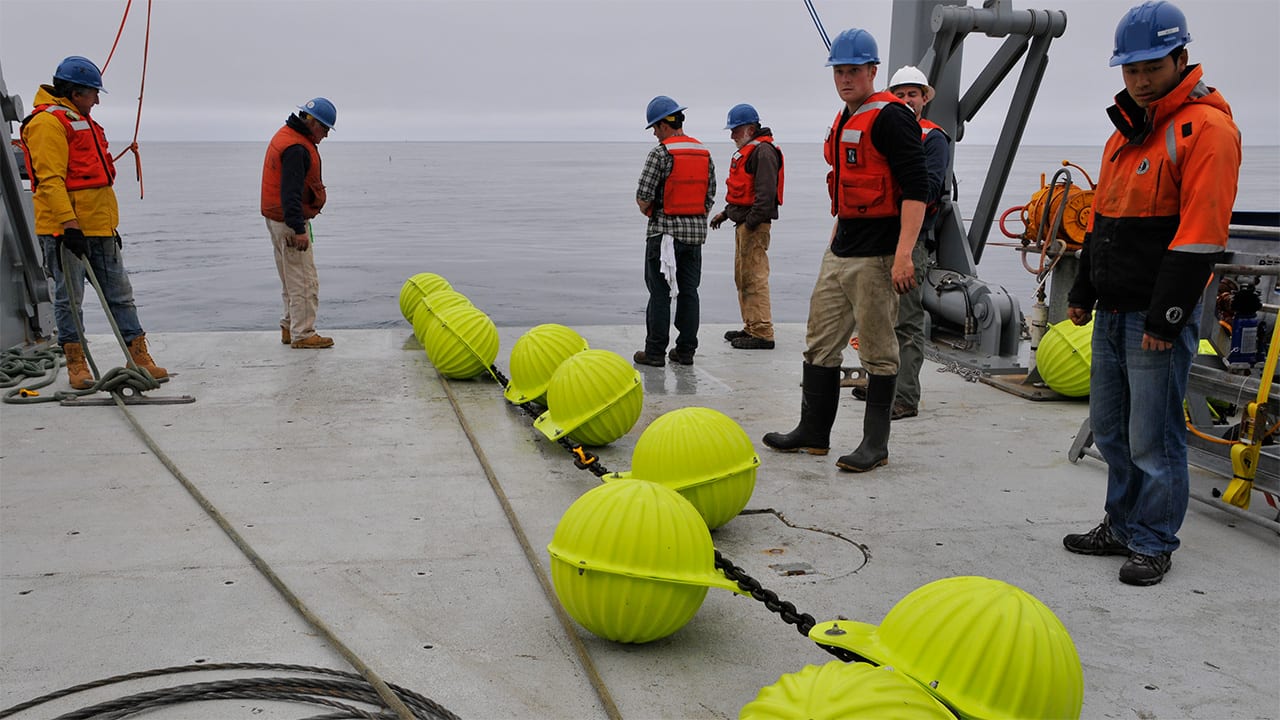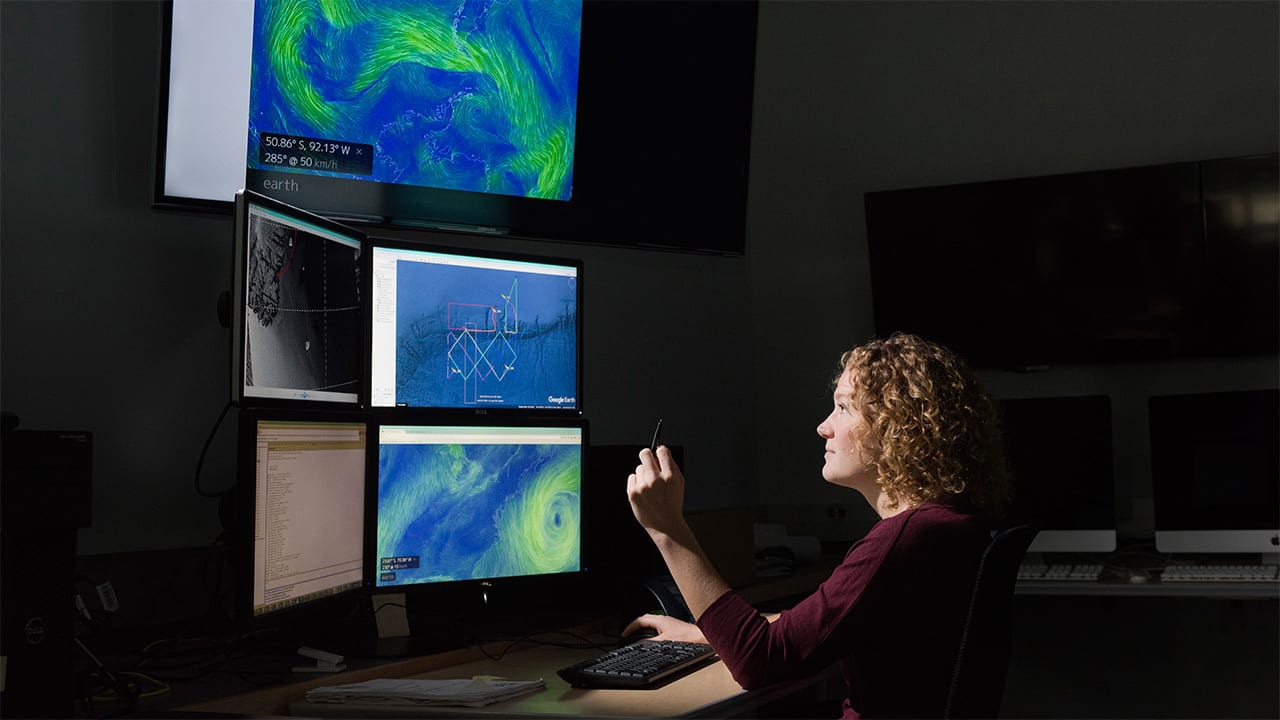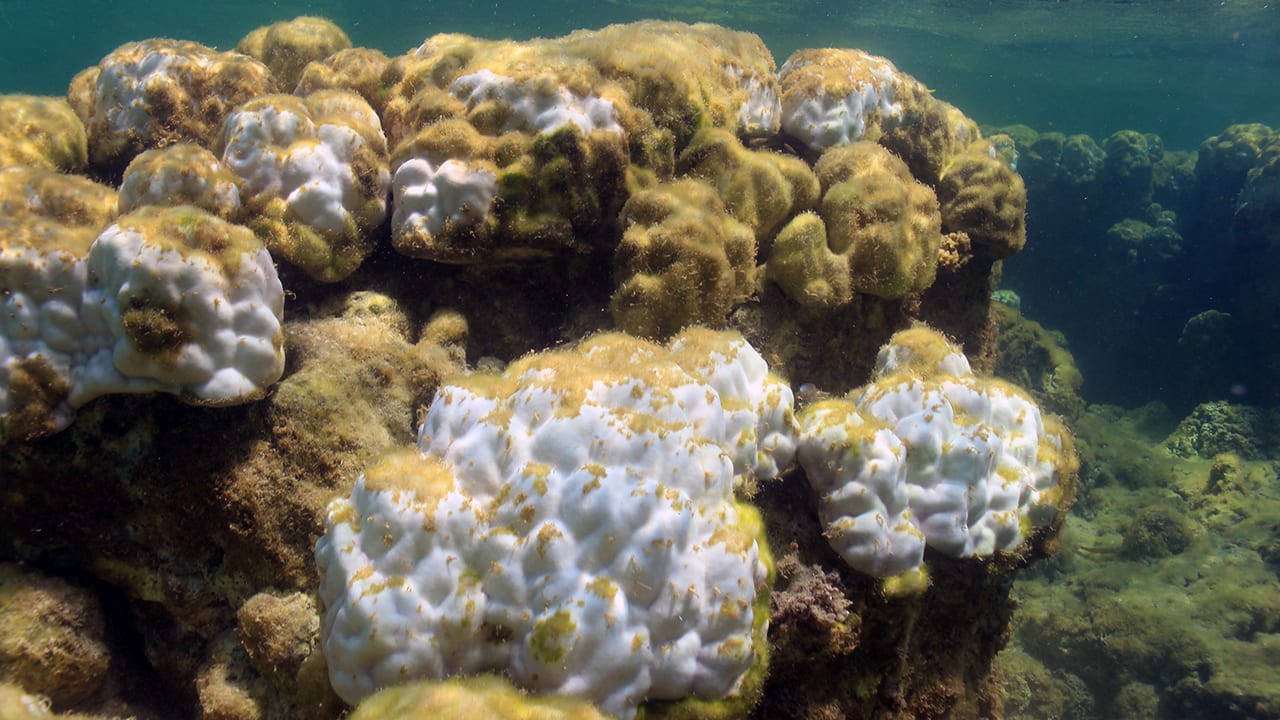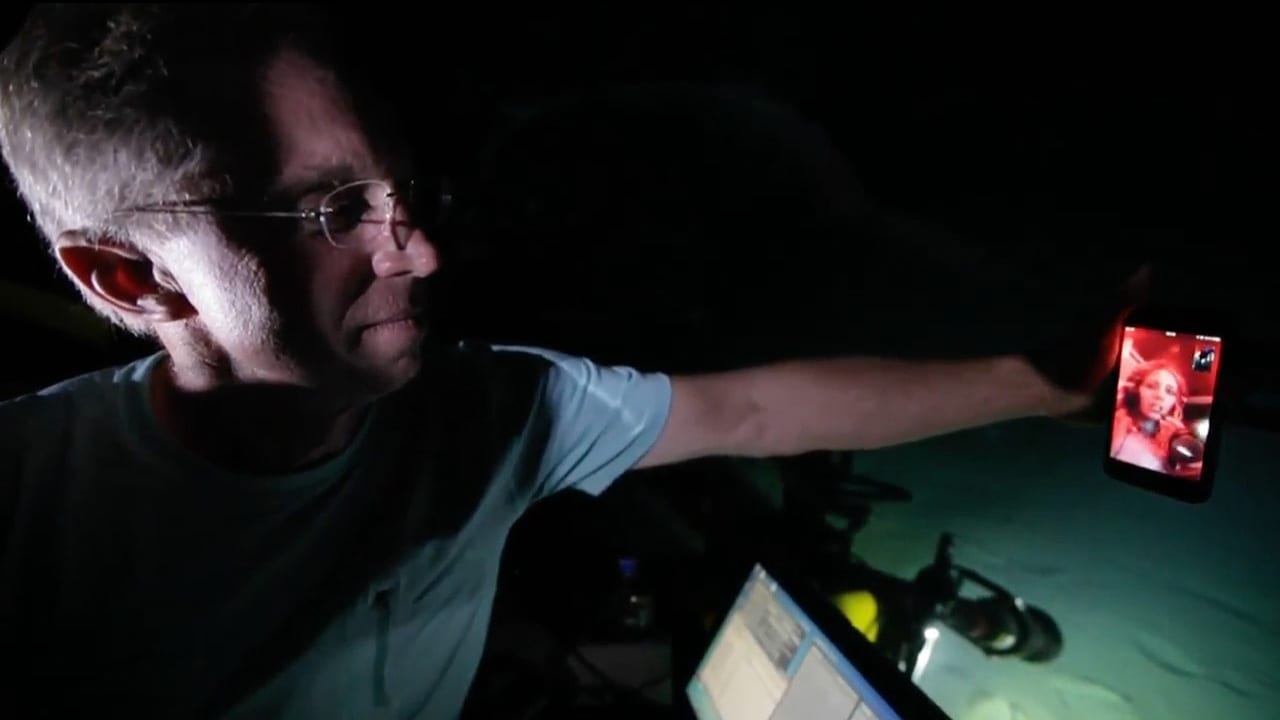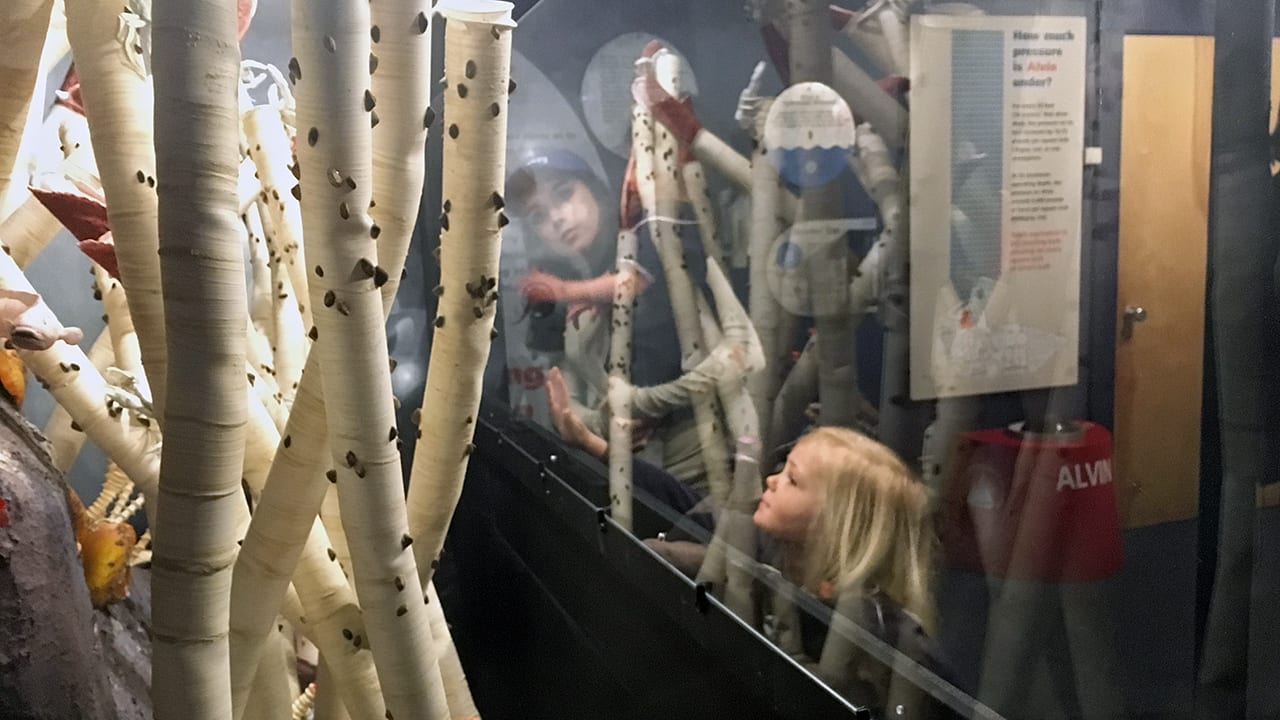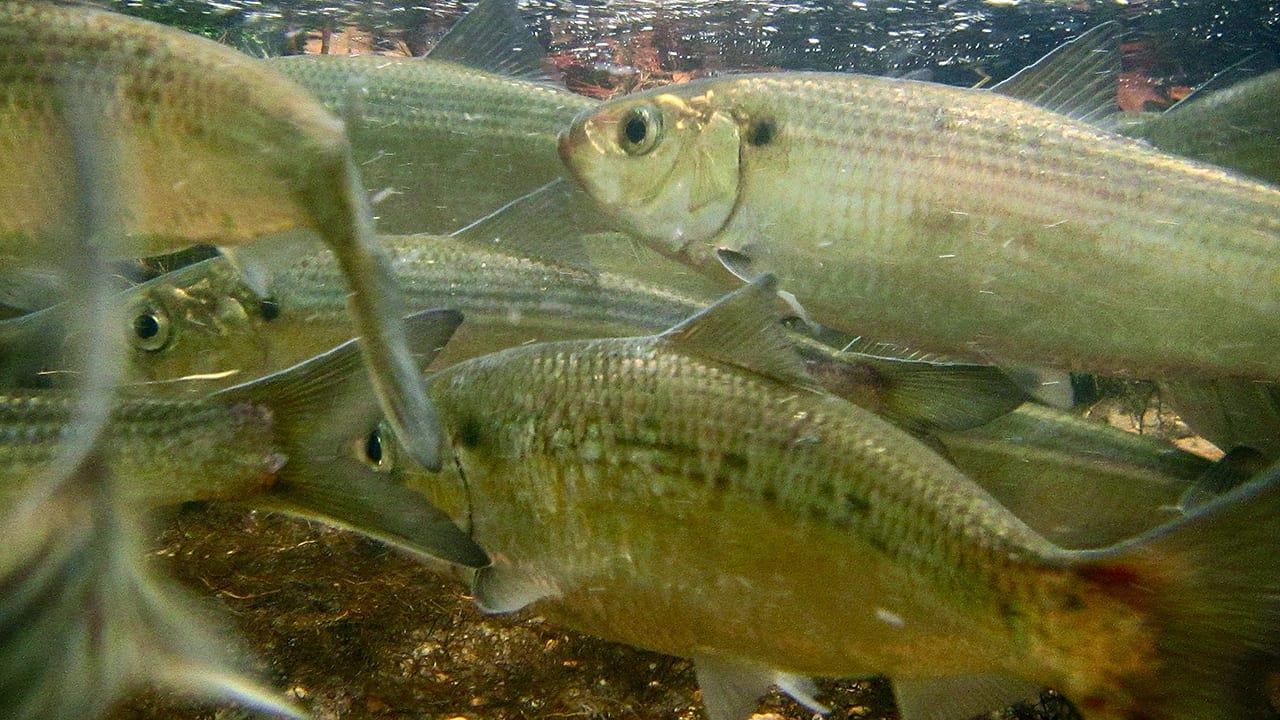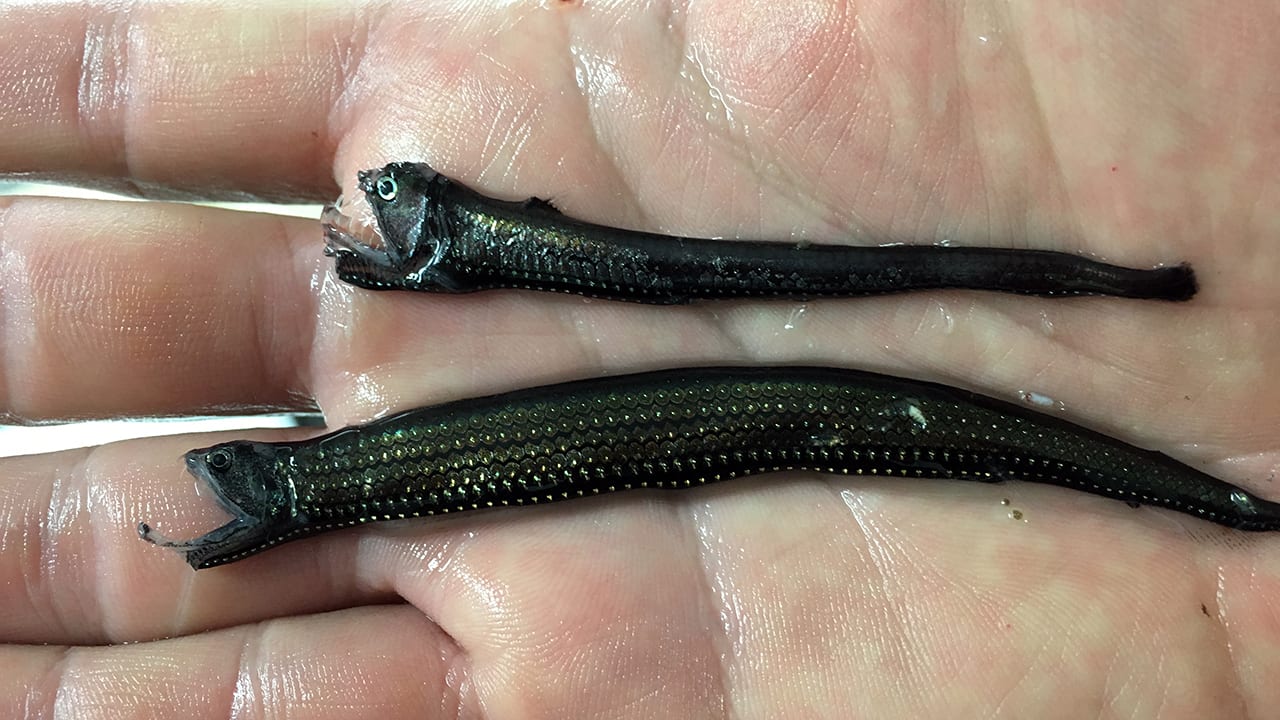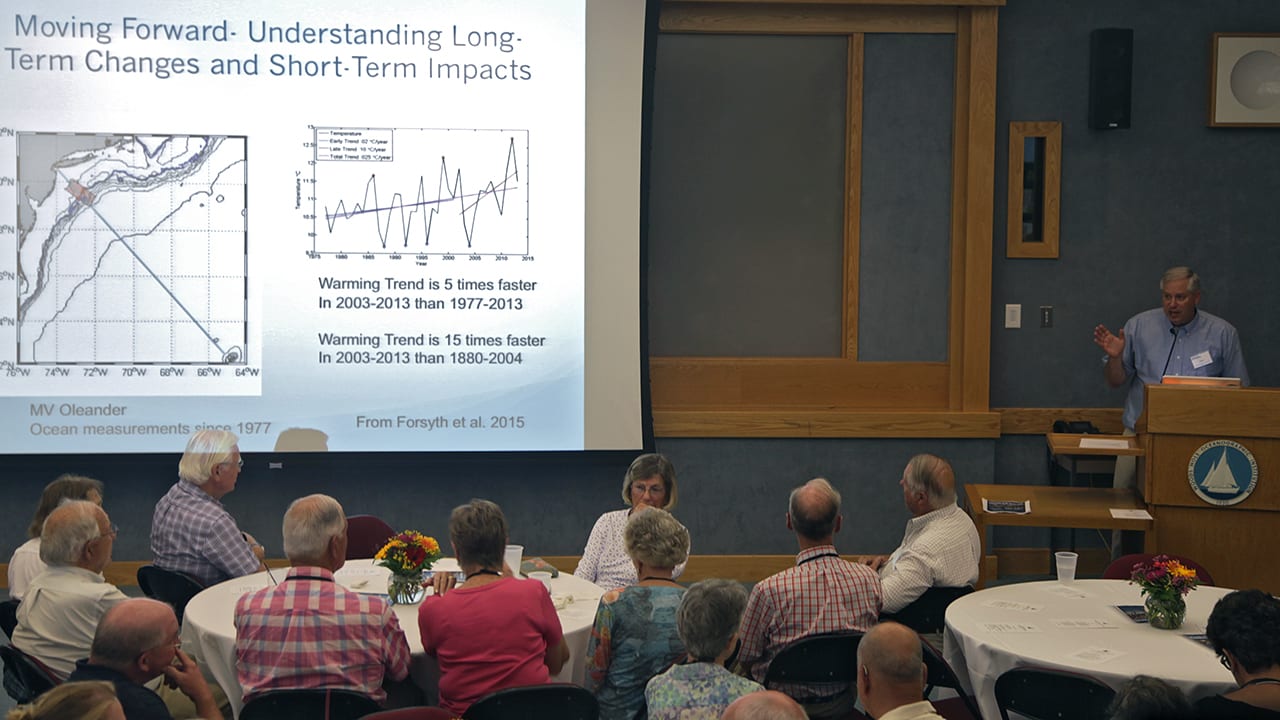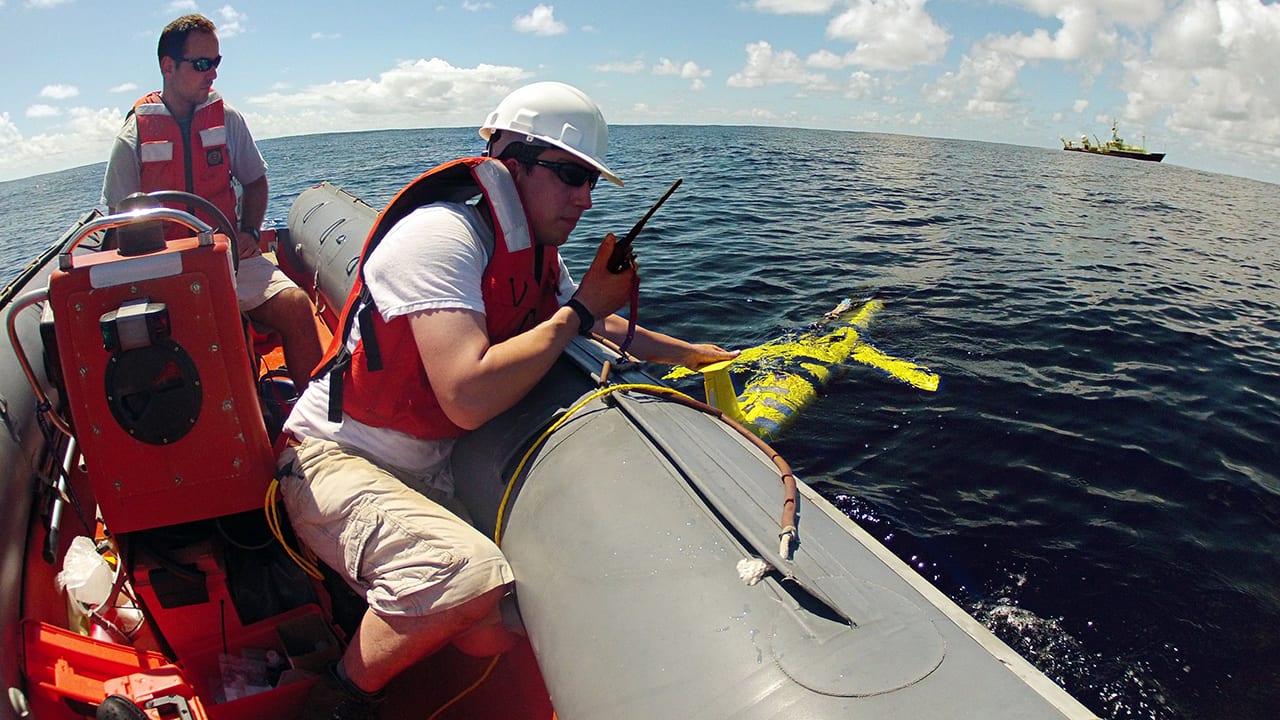Multimedia Items
Lights, Ice, Action
Ice lights illuminate the sea surface ahead of the R/V Neil Armstrong last summer off the coast of Greenland. The cruise, led by WHOI physical oceanographer, Bob Pickart was part…
Read MoreA Deep Look
In the 1940s, WHOI research associate Dave Owen developed an interest in deep-sea photography—then a field in its infancy—early in his career at WHOI. During a cruise to the Mediterranean…
Read MoreEarth = Ocean Day
As the science fiction writer Arthur C. Clarke once pointed out, “How inappropriate to call this planet Earth, when clearly it is Ocean.” The ocean is the planet’s largest living…
Read MoreSix if by Air
WHOI microbiologist Amy Apprill traveled to Chile with a multi-institutional team recently to study blue whales that gather off the coast of Patagonia each year. Among the equipment they took…
Read MoreOceanography in Action
Technicians on the Taiwanese research vessel Ocean Researcher III retrieve a turbulence profiler from the Pacific Ocean off the east coast of Taiwan. In a project sponsored by the U.S.…
Read MoreCollecting Critical Data
MIT-WHOI Joint Program student Thomas DeCarlo recovers a data logger that recorded temperatures on Dongsha Atoll during a recent bleaching event. Water temperatures on Dongsha, a coral reef ecosystem in the…
Read MoreA Star of the Food Web
A diatom chain of the genus Thalassionema is one of thousands of images captured each hour by the Imaging FlowCytobot, an automated, submersible microscope, operating continuously at the Martha’s Vineyard…
Read MoreAll Aflame
A sample is flame-sealed by Kathryn Elder for radiocarbon analysis at the National Ocean Sciences Accelerator Mass Spectrometry (NOSAMS) facility at WHOI. The facility provides a range of radiocarbon dating…
Read MoreDrama in the Deep
Red-hot magma and a plume of sulfurous fluid spew from the West Mata Volcano on the seafloor 110 miles southwest of Samoa in May 2009. At almost 4,000 feet below…
Read MoreMixing & Melting
A new study changes our understanding of how lavas are formed at volcanic arcs, and may have implications for the study of earthquakes and the risks posed by volcanic eruption.…
Read MoreFamily Fun
During a school field trip to WHOI’s Ocean Science Exhibit Center, Paul Jakuba gets a boost from his teacher Shaylee Dutra, to get a better look at giant tube worms, crabs…
Read MoreFalmouth to Falmouth
WHOI is located in Woods Hole, one of eight villages in the town of Falmouth, Mass. WHOI research associate Steve Pike packed a mobile van to be shipped the next…
Read MorePreparing for the Season
Biologist Heidi Sosik briefed WHOI volunteers recently on the new NSF-funded Long-term Ecological Research site that she helped establish off the Northeast U.S. coast. The NSF-funded site will extend from…
Read MorePresidential Vision
Hon. Peter Thomson (right), President of the 71st United Nations General Assembly, visited WHOI recently to explore the possibility of greater collaboration in advance of The Ocean Conference being sponsored…
Read MoreThe Plastisphere
You’re looking at a close-up of a remnant of a plastic trash bag collected from the Atlantic Ocean—magnified 10,000 times by a scanning electron microscope. Tracy Mincer, a biogeochemist at…
Read MoreIrminger Sea Recovery
In 2016 in the Irminger Sea near Greenland, WHOI Deck Operations Leader John Kemp (left of floats at the deck edge), other members of the WHOI Mooring Group, and R/V…
Read MoreGuiding Ocean Gliders
From the Coleman and Susan Burke Operations Room in LOSOS, Diana Wickman and WHOI’s other ocean glider pilots can monitor vehicles “flying” underwater thousands of miles away. When a yellow,…
Read MoreGoing, Going, Gone
Corals on Dongsha Atoll, a remote coral reef ecosystem in the northern South China Sea, were severely damaged in June 2015 when a 2°C rise in ocean temperature was amplified…
Read MoreCan You Hear Me Now?
During a recent test of the optical modem he designed, WHOI engineer Norm Farr extended the coverage of his cellular carrier by about 500 meters (0.3 mile)—straight down. The optical…
Read MoreWonders of the Deep
Lily Foley (foreground) and her teacher and classmates from the Woods Hole Daycare Cooperative sized up the Deep Sea Exhibit, which features giant tubeworms and other unusual creatures found at…
Read MoreA School for Alewives
Northeast U.S. coastal waters are known for their productive fisheries, and alewife are a big food source for commercial species. WHOI biologist Joel Llopiz investigates the factors that affect the survival of alewife…
Read MoreTricky Tactics
A team of WHOI researchers on the R/V Neil Armstrong encountered these unusual-looking specimens last summer, about 100 miles off the southern coast of New England. They collected the fish…
Read MoreFishing for Data
WHOI physical oceanographer Glen Gawarkiewicz discusses climate change at a dinner for WHOI Associates. Gawarkiewicz told Associates about his partnership with local fishermen, who are helping him track changes in…
Read MoreSPURing a New View of Salinity
Researchers on the 2014 SPURS expedition aboard the research vessel Knorr (far right) release an autonomous glider from a small boat on a mission to study salinity and micro-scale mixing…
Read More
